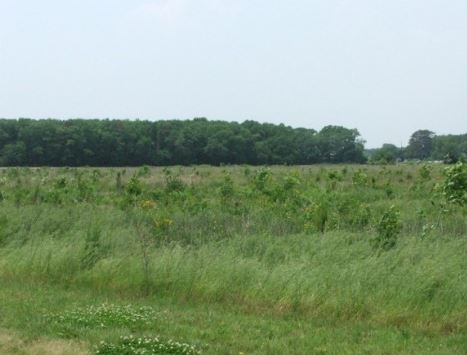Little Assawoman Bay — the smallest of Delaware’s Inland Bays — is connected to Indian River Bay on the north by the Assawoman Canal and to Assawoman Bay on the south via a narrow channel. The Little Assawoman Bay watershed is an agriculture-dominated watershed covering three square miles with no influencing point sources. The area has a high concentration of poultry growing operations but is experiencing rapid conversion toward urban uses.
Runoff from agriculture operations and leaking septic systems contributed high levels of bacteria to the Little Assawoman Bay watershed, violating bacteria water quality standards. In response, DNREC added Little Assawoman Bay watershed to Delaware’s Section 303(d) List in 1996. Targeted education and BMP implementation successfully reduced bacteria counts, allowing the bay to meet water quality standards. As a result, DNREC removed Little Assawoman Bay from Delaware’s 303(d) List in 2006.
 Excessive bacteria inputs from agriculture and failing septic systems prevented Little Assawoman Bay from supporting its recreational uses. Water quality monitoring data show that bacteria levels routinely exceeded the state water quality standard for primary recreation, which requires that a single sample value of Enterococcus bacteria must not exceed 104 colonies colony-forming units per 100 milliliters and that the geometric mean value must not exceed 35 colony-forming units per 100 milliliters. Because Little Assawoman Bay failed to meet standards, DNREC placed it on Delaware’s 303(d) List for bacteria.
Excessive bacteria inputs from agriculture and failing septic systems prevented Little Assawoman Bay from supporting its recreational uses. Water quality monitoring data show that bacteria levels routinely exceeded the state water quality standard for primary recreation, which requires that a single sample value of Enterococcus bacteria must not exceed 104 colonies colony-forming units per 100 milliliters and that the geometric mean value must not exceed 35 colony-forming units per 100 milliliters. Because Little Assawoman Bay failed to meet standards, DNREC placed it on Delaware’s 303(d) List for bacteria.
DNREC developed a TMDL for bacteria in 2004 that addressed the entire Inland Bay watershed, which includes the Little Assawoman Bay watershed.
 In 2001, the nonprofit Center for the Inland Bays collaborated with Delmarva’s major poultry integrators (Perdue Farms, Mountaire Farms, and Allen’s Family Foods), the Delaware Nutrient Management Commission, DNREC’s Nonpoint Source Program, and the Sussex Conservation District to develop the Little Assawoman Bay as a model watershed area. The project, known as the Poultry Integrators’ Nutrient Effort (PINE), sought to accelerate compliance and certification programs mandated by Delaware’s Nutrient Management Law. This comprehensive approach was developed to reduce NPS pollution.
In 2001, the nonprofit Center for the Inland Bays collaborated with Delmarva’s major poultry integrators (Perdue Farms, Mountaire Farms, and Allen’s Family Foods), the Delaware Nutrient Management Commission, DNREC’s Nonpoint Source Program, and the Sussex Conservation District to develop the Little Assawoman Bay as a model watershed area. The project, known as the Poultry Integrators’ Nutrient Effort (PINE), sought to accelerate compliance and certification programs mandated by Delaware’s Nutrient Management Law. This comprehensive approach was developed to reduce NPS pollution.
The PINE project increased BMP usage throughout the watershed. BMPs included:
Monitoring data show that bacteria levels have dropped in Little Assawoman Bay due to the efforts of the agricultural community. By the end of the monitoring assessment period in 2006, data from each of the measured monitoring stations showed that water quality standards for bacteria were met. On the basis of these data, DNREC removed the the Little Assawoman Bay from Delaware’s 303(d) List for bacteria. Monitoring will continue at all Little Assawoman Bay stations to ensure that the waters continue to meet standards.
Related Topics: conservation, Little Assawoman Bay, nonpoint source, story, success, water quality, watershed